
Decisions around heating, ventilation, air conditioning, and dehumidification (HVACD) touch every component of a cultivation operation, at all phases of development. Budgets, design, construction, facility operation, operating costs and revenues are all directly affected by the design and implementation of the HVACD system.
Being so closely involved in all phases of construction and operation during our years in the cannabis industry means that we have direct experience with every aspect of the grow. However, we keep our focus on MEP design and HVACD equipment in particular because we understand that, instead of trying to be all things to all cultivators, we serve the industry best by narrowing our focus and striving every day to be the best in the world at what we do.
This means that we will be all things environmental to all cultivators, and that’s a huge job in and of itself as it includes not just management of temperature and humidity but also includes controls and data collection, biosecurity, odor control and systems maintenance. It also directly impacts quality, yields, costs and revenues. Thus, the products and services we offer related to management of the cultivation environment are vast, and span early stage budgeting, engineering design, equipment, start up, and commissioning. This can include remediation of systems designed by others that may not be performing the way they should.
Our recognition in the industry as the experts in cultivation climates means that we are often asked to diagnose performance failures in systems not of our design. When we audit these systems, we find there are common themes as to why they aren’t performing as expected. Let’s discuss the most common reasons we find for issues with HVACD system performance.
1. MISAPPLIED TECHNOLOGIES
Equipment selection in cultivation operations is vitally important. While there are several technologies with which a cultivator can succeed, there are also several technologies that are absolutely inappropriate. Unfortunately, the technologies that are least appropriate—namely, those designed primarily for comfort cooling—are also the most common and generally the least expensive.
As a result, the temptation for the inexperienced cultivator or engineer to specify these units can be high. The consequence is almost always early failure, constant maintenance, and compromised cultivation climates. With the right experience, your engineering partner can help you select equipment that meets the needs of both the cultivation environment, and the budget.
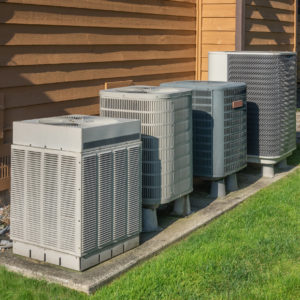
2. IMPROPER INSTALLATION
Nothing will work correctly if it hasn’t been installed correctly. Cultivators will sometimes select installation contractors who lack “big job” experience, leading them to underbid jobs and cut corners even with the best of intentions. This could culminate in the installation of lower cost alternate materials without engineering approval or skipping steps that they may not realize are vital, resulting in an underperforming system.
It’s important to ensure that the contractor installing your HVACD system has direct experience installing systems of the scale that you’re implementing. That doesn’t necessarily mean the mechanical contractor needs direct cultivation experience – although your engineer absolutely does need this experience. However, an installing contractor with large-scale commercial and industrial construction experience is a must-have for a smooth implementation of the system.
Incorrect application of controls systems is also a common issue that falls under this category. When choosing a controls system, it’s very important to understand what it is and isn’t capable of and to ensure that it’s the appropriate system for the type of HVACD system that you’re implementing. Ideally, the supplier of your controls system includes start up and commissioning of their system to ensure that it’s wired correctly and operating as the mechanical designer intended.
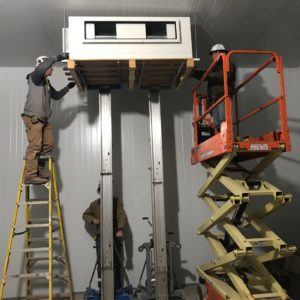
3. LOAD CALCULATIONS
Even the best, most sophisticated piece of equipment will fail in an application if the room loads are incorrectly calculated. HVACD systems are a series of heat exchangers which transfer heat and moisture from location A (your grow room) to location B (outside your grow room). This is accomplished in a number of ways, with varying degrees of sophistication and energy efficiency, but the capacity of these systems to remove heat will always be limited to their performance rating under specific conditions.
Load calculations must be done based on the amount of heat and volume of water that must be removed from the space, balanced against the parameters the cultivator desires in the space. This may change throughout the grow cycle, and certainly between lights on and lights off, and the performance capacity of the selected systems under those conditions.
The most common mistake in load calculations is failure to adequately account for the dehumidification loads, or incorrect assumptions about how the system will be operated. This is usually the result of the designer lacking the experience to ask the right questions and understand the full scope of the needs of the cultivator, and the plant, to ensure the system is designed to achieve those parameters under every condition the cultivator requires.
Mistakes in load calculations can be exceptionally costly for the cultivator, and we’ve seen it require extensive rework in cultivation facilities. This can have a devastating operational and financial impact. Experience is the most important component to ensuring loads and system performance are correctly calculated.
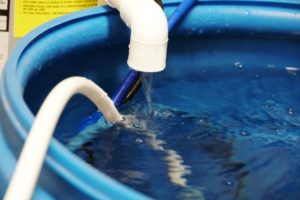
4. UNREASONABLE EXPECTATIONS
We find this issue most commonly when a new cultivation team takes over an existing facility. Every operator has unique irrigation practices and required parameters for their cultivation process. Remember that mechanical systems are designed to remove a specific amount of heat and moisture, under specific conditions.
When the irrigation strategy, and associated water volume (dehumidification load) changes, the system may not be able to keep up. Similarly, if the system was designed to maintain an 80 degree lights on temperature, and the new operators desire a 72 degree lights on temperature, the system is unlikely to be able to achieve that new temperature—let alone dehumidify effectively at the new dewpoint temperature resulting from the lower set point. This is not because the equipment is failing, it’s thermodynamics.
If you’re considering the purchase of a new cultivation facility, or contemplating modification of irrigation strategies, lighting, or climate parameters, consult with an expert like Surna to evaluate the HVACD system on the facility to ensure your requirements can be met, and if not, what it might cost to retrofit. If you’re designing a new facility and looking for flexibility in the HVACD system to plan for variable parameters, that expertise can also help you maximize flexibility in the most budget-friendly way.
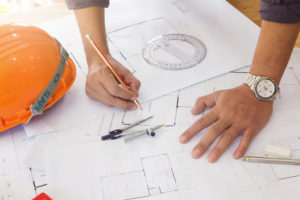
5. MAINTENANCE
HVACD systems have long been the most neglected pieces of equipment in commercial buildings, and that theme appears to have continued into cultivation facilities. Just like any piece of machinery, climate control systems must be properly maintained to enable peak performance, and to ensure the longevity they are capable of.
In every system, filters must be replaced, coils must be regularly maintained, and condensate drainage systems must be kept clear. In more sophisticated and energy efficient systems, there may also be water quality and treatment to address, strainers to clean, lubrication and chemical treatment, among other things. We’ve seen compressors and fans fail due to dirty condenser coils or unchanged filters, chillers compromised due to uncleaned strainers, and equipment alarms left unheeded for weeks at a time. These are all expensive, and completely avoidable, mistakes.
Unfortunately, most cultivation operators don’t appropriately address the maintenance needs of the entire facility when staffing. While the cultivation staff is certainly competent to clean a coil and replace a filter, it is not generally a best practice to rely on the cultivation team to manage all the maintenance needs of the facility. If a competent facility’s maintenance staff is not on the payroll, make sure you work with companies who offer maintenance services for the critical systems in your facilities to ensure their performance and longevity.
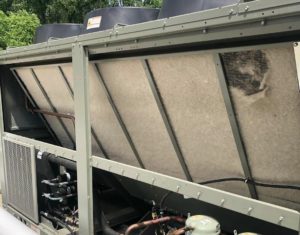
HONORABLE MENTIONS
Issues related to biosecurity, odor control and energy use come to our attention often as well. We’ve been called upon to address odor control remediation in several facilities where owners have had issues with neighbors or the municipality because odor control wasn’t properly addressed at the design level. This can be costly and disruptive to address after the fact.
Biosecurity issues usually arise because of improper climate conditions, which can be caused by any of the issues listed here, or because filtration and air sterilization wasn’t correctly addressed at the design level. This can also be costly and disruptive to correct.
Particularly close to our hearts is the excessive use of energy related to climate control in cultivation facilities. We’ve seen inexperienced designers just keep throwing equipment at a facility to maintain parameters, which could have been avoided entirely if it had been properly thought out to begin with.
Failure to address the energy use component and talk it through in detail with the cultivation and ownership team to balance operating costs against complexity and budget is a common cause of excessive operating costs in cultivation facilities. This is a key component to the design of any HVACD system and should always be part of the conversation during design.

